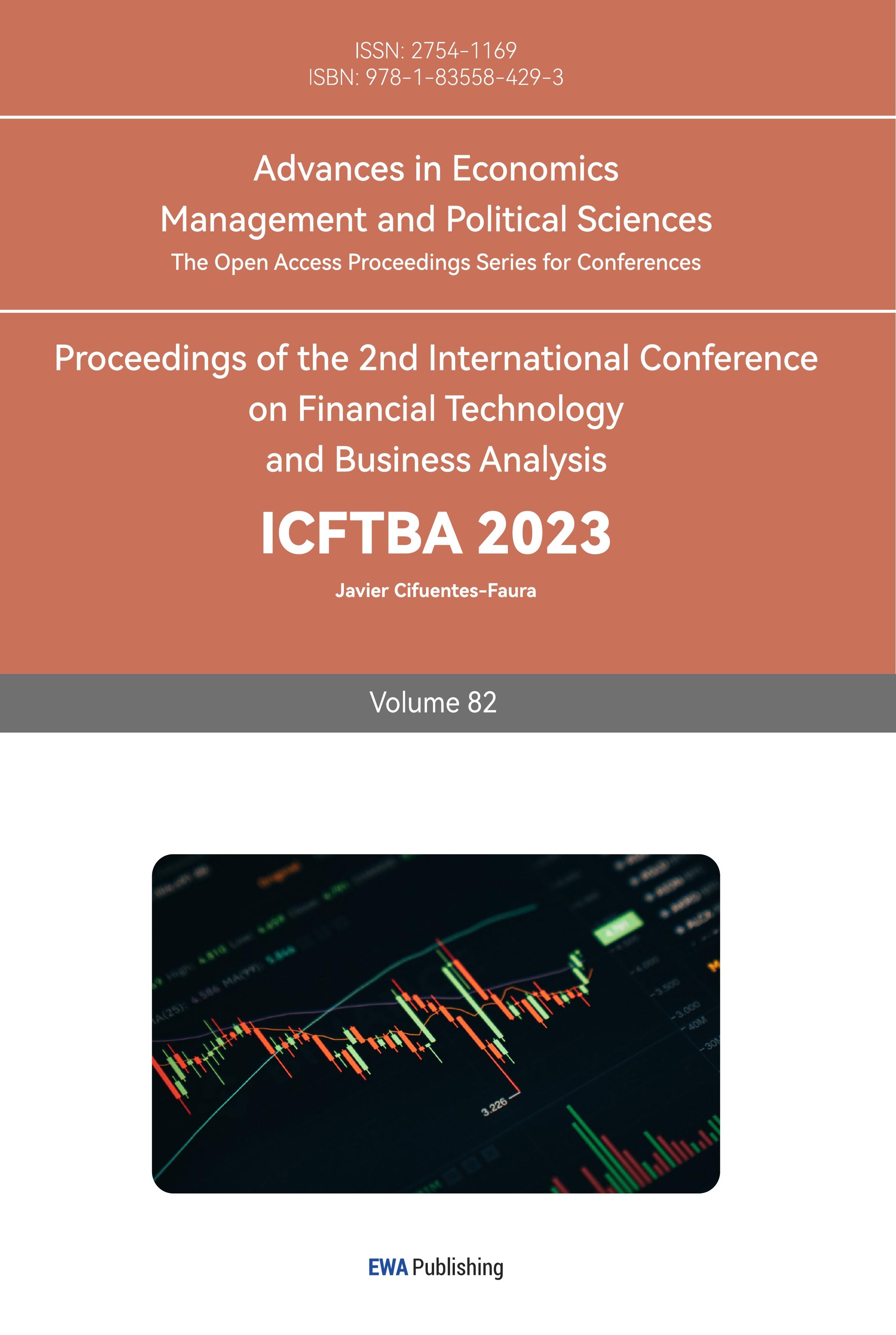1. Introduction
The marketing landscape is constantly evolving, and marketing strategies are continually adapting to different changes and crises. The COVID-19 pandemic that occurred in recent years has had a devastating impact on the marketing world, causing a significant decline in demand for many products and services, and lower employment rates as people were forced to stay at home. Because of the pandemic, consumers started behaving in very different ways from before. This has required organizations to adapt in response if they want to survive the pandemic.
One sector that has been greatly impacted is the fashion industry, with many brands adapting to the pandemic. However, the response strategy has depended on whether one is a low-end or a high-end brand. Low-end brands for example have thrived by shifting their focus to digital marketing. As the effects of the pandemic opened the market for e-businesses, niche fashion brands that prioritized digital marketing have been more effective in attracting customers during the pandemic than high-end brands that did not widely adopt digital marketing. High-end brands have adapted in other ways, for example by adapting their advertising strategies, by being philanthropic, etc.
The purpose of this paper is to provide insight into how low-end and high-end fashion brands in China managed to survive through the pandemic by adapting their marketing strategies. Using the case study method and customer surveys, we will provide a discussion of effective strategies for survival used in the fashion industry.
2. The impact of Covid-19 on Consumer Behavior
The influence on the fashion industry caused by covid-19 is non-negligible. To minimize the number of infections, lockdown, and social distancing was required by numerous governments around the world. Hence, the restrictions on foot traffic brought the problem of the paucity of consumer shopping. More than that, considering the pandemic’s restrictions, there was a global economic downturn. Businesses laid off people or lowered their salaries to save the cost so many people are in the unemployment statement. In summary, these all caused people to change their consumer behaviors. Consequently, demand for luxury goods became more elastic. People who used to afford luxury goods may not buy luxury goods as frequently as before. This circumstance especially happens in the middle class since the income of middle-class households fell by 2.1% [1]. Due to the decrease in income, the middle class may prefer more on goods that are at a normal price instead of luxury goods.
In addition, customers’ preferences in clothes types have also changed. As Zengel mentioned, “COVID-19 brought financial uncertainty and insecurity, and spending on fashion apparel quickly decreased” [2]. Because of the shutdown, most people must stay at home, this caused the demand for outdoor clothing to decrease as well. People relied more on comfortable clothes like pajamas than on others. The sales of pajamas more than doubled in 2020 compared with 2019 [3].
The shutdown also impacted consumer behaviors in another way: the change in consumer shopping habits. Due to restrictions on foot traffic, customers could hardly spend time offline shopping. Instead, e-commerce is flourishing now. Overall, in 2021, consumers spent $870.78 billion online with U.S. merchants, up 14.2% from $762.68 billion in 2020 [4]. From the statistics, we can tell that people changed their shopping habits from offline shopping to online shopping.
3. Literature review: Customer behavior changes & coping strategies in times of crisis
Due to the increase in the unemployment rate, people are likely to experience job losses, which results in the producers rethinking business plans, and customers changing their shopping preferences and behaviors [5].
Typical behavioral changes in customers:
Avoid buying high-priced products and luxurious brands [5]. Instead, customers will look for brands that are more affordable, like generic brands, national brands, niche brands, etc. As mentioned before, during economic recessions, people would likely receive less income, especially during a pandemic. When everyone stays at home doing quarantine, their opportunities to make a profit are limited, which would result in a decrease in demand for high-end products. Moreover, a decrease in order is possible for all industries and would end up with unfavorable changes in price elasticity, where sales and price increases would respond more negatively [6].
Because of the pandemic, safety is the top priority for customers, not only in financial terms but also in health-related security terms [6]. Financially, customers will cautiously consider if they need the product or not. Goods like cars, high-techs, luxury, furniture, etc, would not be popular during the crisis due to low-cost performance [5]. Instead, people would consider their needs and purchase useful clothes, food, sanitary products, masks, etc, that would satisfy the customer’s needs for security and a higher cost-performance ratio in buying these products.
Reduction in transportation and a tendency to buy from convenient or near locations from work or home [5]. A typical example of this behavior change is that customers will go from big shopping malls to grocery stores nearby and do online shopping. Especially in a crisis like the pandemic, people would use transportation less often.
Based on these typical behavioral and preference changes, companies should meanwhile adjust the market. Previous research has suggested that there are several ways in which companies can deal with crises like the pandemic:
One of the obvious strategies was to do sales and drop the prices to boost demand. Although this would be preferred by the customers and stimulate demand, it is not resistant to such a global crisis. We need strategies and plans that cope with crises and make a profit in the long run [7].
First, it is important to conduct a marketing analysis and plan for possible marketing strategies, which would be helpful for adopting into recessionary situations, as well as coping with economic crises [8]. Economic trends can vary, the same as consumers’ shopping habits, especially in the fashion industry. Marketing strategies conducted need to meet the needs of consumers and to adapt with nuance that can enhance the brand [9]. After analyzing consumers’ needs and preferences, companies target the situation appropriately.
Second, to respond to customers’ changing behaviors, brand adaptation is needed [7,10]. Some companies are acutely aware that consumers lay more on the necessity and its durability, so they paid more attention to the quality and cost performance of clothes. Brands like unique, which maintained their high-cost performance during the covid, are more likely to be selected by the majority. Many brands reexamined their brand positioning to cater to a younger customer base since wealthy shoppers get younger [11]. Gucci, for instance, turned its brand positioning into a more youthful and energetic one. Gucci incorporated more street culture elements into designs to attract young people to buy. Establishing a strong emotional bond with the customer will increase customer loyalty, and allow them to continue purchasing a product, and this bond would be resistant to external influences and crises [7].
Third, it has been suggested that the way in which brands communicate needs to adapt as well [10, 11]. For example, the fashion industry also altered its methods of advertising. People’s daily routines have changed a lot due to the lockdown. They spend longer time on phones and less time on offline shopping, so the methods of advertising must change with their daily routines. Brands are running advertisements on different social media like Instagram and WeChat.
Finally, make good use of social media and digital marketing. Use youtube channels, e-commerce, blogger recommendations, etc. These are effective media that help the brand to attract customers from a broader reach online [12]. Some brands like Hermés even developed their own online “shopping mall” so customers can still purchase goods online. When people stay at home for a long time, the internet is the only way for them to connect with the outside world. Hence, during the pandemic, through different kinds of digital marketing, a brand would be able to advertise its products and message to an extensive range of people.
4. Methodology
To investigate how customers have changed during the pandemic, and the kinds of strategies employed by fashion brands that have successfully navigated through those difficult times, we are going to collect some primary data. This will entail case studies of two companies with very different positionings: high-end vs low-end. And surveys and interviews of consumers will provide an in-depth understanding of how consumer behavior has changed during the pandemic, and how some brands have managed to adapt accordingly and continue to create and deliver customer value.
4.1. Brand strategies (Louis Vuitton & SMFK)
To show the effectiveness of marketing strategies in times of crisis, two brands are noteworthy for making the comparison in strategies and results between a high-end brand and a low-end brand: Louis Vuitton - representative for high-end brands, SMFK - representative for low-end/niche brands.
Louis Vuitton.
LV is known for its luxurious leather goods, iconic monogram designs, and a variety of fashion items [13]. It is one of the classical brands in the fashion industry, where at this period, it doesn't need much emphasis on advertising. Instead, they emphasize the quality of these iconic handmade fashion goods. For instance, people would barely see advertisements of LV on Tiktok, since as a high-end brand, its marketing strategies are intentionally targeting upper-class customers. One of their marketing strategies is attracting customers through runway shows, where they invite celebrities, well-known Tiktokers, and VIP customers to the runway [13]. The runway is not available to everyone, but it fulfills its goal of targeting high-income groups. Although it is a luxury brand that sells for high prices, its profit and sales decreased during the pandemic.
According to the annual report from LVMH (LVMH Moët Hennessy Louis Vuitton), in 2020, which is when the pandemic just occurred, the profit from recurring operations and revenue for all fields were decreasing. The total revenue change for 2020 was -16%. Across the world, there was no data that shows a positive revenue change [14]. This indicates that during the pandemic, the whole company LVMH was not getting high enough returns. The reason for this phenomenon relates to a lack of adaptation to the new market environment, as well as targeting only high-income level groups. The pandemic increased the unemployment rate across the world, which resulted in everyone’s income level decreasing. They cannot reduce the price of the products, otherwise, they would not be luxurious and scarce. It limits their ability to adopt marketing strategies and broaden their target customers. For instance, selling LV in a shopping mall is better than selling it on the live stream. Why? Live streaming will affect the brand's image of high-end luxury, which then could cause the customers that are loyal to LV not to want to buy it.
SMFK.
A Chinese niche and more affordable low-end brand, and was made known in the Chinese market, even during the pandemic. Based on their official explanation about the brand, SMFK emphasizes a unique style of clothing that is universal and practical, regardless of gender, skin color, or body shape. Their purpose was to let consumers adapt to the needs of different environments in life while wearing good products, through the basic ways of dressing [15]. Their brand message appealed to a wider range of consumers, and the style is unique, which is what stood them out during the pandemic. Even with multiple niche fashion brands competing in the fashion industry in China, SMFK was able to stand out through multiple effective ways of marketing.
First, multiple celebrities and Tiktokers in China wore SMFK, and they would use marketing accounts on Tiktok (or other media) to spread the pictures of people wearing them. There are over 500 million people in China who follow celebrities, which is a huge market size to seek opportunities in advertising [1]. Second, they entered e-commerce and live streaming on famous shopping sites. Again, this expands their exposure to more customers, and online selling is very convenient for people doing quarantine during the pandemic. Most importantly, they adapted to the new market conditions affected by the pandemic and planned accordingly to keep sales up during the crisis. Finally, like many other brands in China, they pay bloggers or Tiktokers to share videos about their products, which includes showing them what the clothes look like, introducing their brand concept, design, etc. Through those people’s credibility among their followers, more people would be willing to buy their products, and at the same time, receive the brand’s intended message. This not only boosts their brand exposure to the public, but it also can potentially increase their number of loyal customers. Therefore, these strategies have aided the company in not only surviving the crisis but also benefiting from the opportunities in online marketing.
5. Findings and Discussion
To further justify the analysis above, we conducted interviews and surveys relating to social media use and shopping preferences. Our interviews with consumers revealed several interesting insights about their shopping behavior during the pandemic.
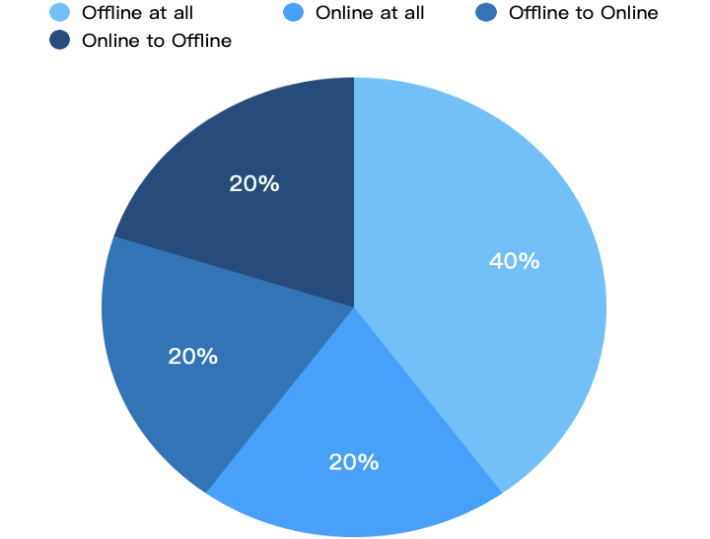
Figure 1: Data on consumers’ prosperity of shopping channel
First, consumers’ preferences of ways of shopping (offline or online) are not changed or been fully influenced by Covid-19. Over 50% of our interviewees prefer offline shopping for try-on, quality of material, and after-sales service. They also explained the reason might be due to their age and that most clothes they buy are for their children or other family members. And one consumer gave a reason for “Refuse”, she explained that: “When I was young, I didn't know how to refuse those salespeople, so I will buy some products that are not suitable. However, as I grow up, now I know how to refuse them so that I can enjoy offline shopping and ignore salespeople.” Moreover, one of them mentioned that offline shopping is for her social needs, not just buying some products she wanted. Furthermore, only 40% of interviewees shop online due to the cheaper price, convenience, and fearness of the virus. One of our interviewees said: “ I usually go to the brick store to see if there is any cloth that I like, then I will purchase it in their online shop with a coupon.”
Second, people spend more time at home which influences the type of clothing and style of clothing they buy. For example, one of the surveyed consumers told us that she purchased more pajamas during the lockdown periods because she cannot go outside, and wearing pajamas is convenient and more comfortable. She said: “Because of Covid-19, I stayed at home for most of the time with less chance to wear professional suits. My cosmetics are all overdue and I don’t want to buy more, because there are fewer social occasions and there are also fewer dressing requirements.” In addition, 94% of them care about cost-effectiveness and fabrics, they will be attracted by clothes that are concise, comfortable, and wear resistant. The other 6% of consumers prefer niche designer brands with a creative and unique design that is aesthetically pleasing to customers.

Figure 2: Data of consumers’ frequency of using social media
Third, within highly developed social media, consumers get many reviews and recommendations from YouTubers, bloggers, influencers, or podcasters. According to the interviews, more than 83% of consumers will refer to comments from social media for different frequencies and purposes.
Table 1: 3 typical representative results conclusion)
Demographic Information (Gender,Age,Size of clothing …) | Frequency | Purposes | |
No.1 result | Female Chinese 30+ Oversize | When she bought clothes | For alter clothes (make it fit with her) |
No.2 result | Male American 36 Oversize | Never | Only specific podcaster that he trusts with |
No.3 result | Male Chinese 44 Average Salary: below ¥20,000 | Usually | To decide whether buy the expensive cloth or not |
As displayed in the table, consumers refer to social media with different purposes, which can meet their needs. In the first result, the consumer expressed: “ I usually buy clothes offline first, then view some influencers’ suggestions to alter the cloth I bought. Because I’m oversize, not every influencer’s size fits me, the effect on them will not be the same on me.”
In the second result, the consumer who came from the US is also oversize and does not like to refer to social media. However, he has a specific podcast (The Fantasy Footballers Podcast) that he will take the recommendations for just because he thinks they are trustworthy. Both first and second results mentioned that the size criteria in China is unfriendly to oversize people.
In the third result, the consumer refers to social media to decide whether to buy expensive clothes or not. He explained that because his income is the majority of total family income. He should consider carefully what extra consumption is worth.
Finally, consumers have different attitudes and thoughts to e-commerce development (the future of online shopping) with different perspectives, supportively, critically or dialectically. Consumers with a positive attitude state that online shopping in China is already mature and with a wide audience. Consumers with a negative attitude think it is a threat to some fashion brands because public consumption is degrading, and consumers will not consider expensive clothes. Another group of people thinks it might bring the trend of re-thrive offline shopping.
As we’ve all experienced, COVID-19 has completely changed people's living habits, even in various industries. The survey of our group consists of 8 questions, and we mainly focus on how COVID-19 affects everybody’s shopping habits, the questions investigate people’s age range, the tendency to buy clothing, and the factors that might affect them.
According to the data we collected, the first graph clearly demonstrated that people from age 11 to 49 have participated in the survey where 31% of them are teenagers while the rest are grown-ups. Coming to the second picture, more than half of them spend less than 500 RMB on clothing every month, followed by one-third of them who spend 500-1000 on clothing monthly, 12.7% spend 5000-10000 RMB and only 2 of the 71 spend more than 10000 RMB. Next, an overwhelming 73.2% of people attend to buy cost-performance brands such as UNIQLO, and the second largest portion of people is 25.4% who are in favor of designer brands. To our surprise, only 1 in 71 by luxury brands.
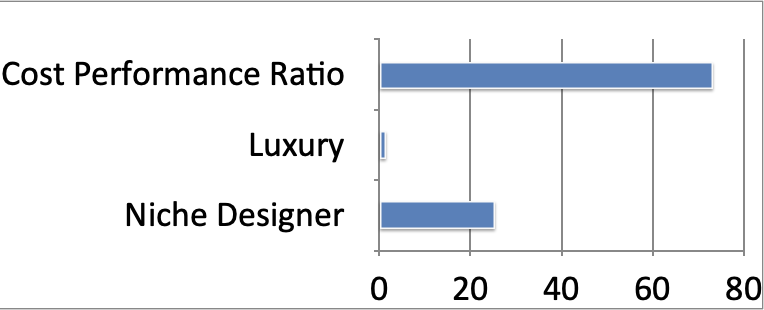
Figure 3: Data on consumers’ prosperity in choosing brands
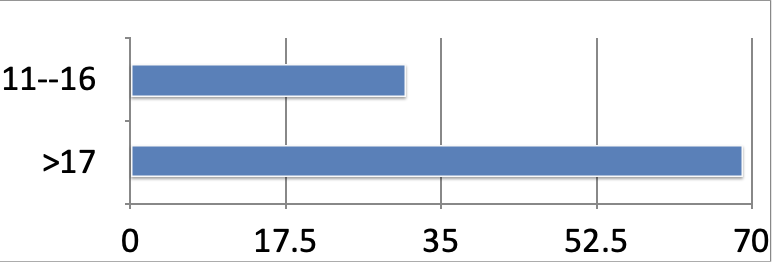
Figure 4: Data of consumers’ age
Considering during COVID-19 people spend more and more time on phones and social media, we decided to investigate how this affects people’s shopping tendencies, so in the fourth and fifth diagrams, we made a question about how often they use their phones, and do they listen to self-media bloggers before purchasing clothing. Unsurprisingly, a dominating number of 74.5% of people who use their phones almost every day, even occasional or nonmobile phone users account for only 30% of the total number.
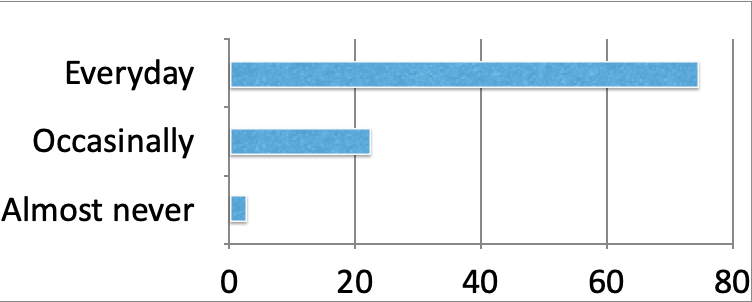
Figure 5: Consumers’ frequency of using social media based on surveys
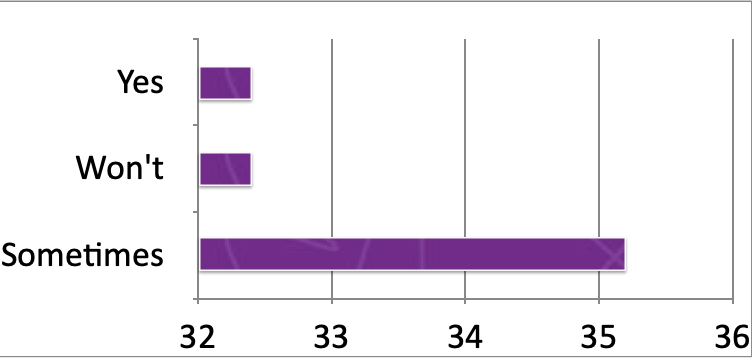
Figure 6: Consumers’ propensity of whether refer social media or not
Table 2: Summary of the results
Low-end brand | High-end brand | |
Positioning | People-friendly | Fashion, Unique, Luxury, Focus on specific consumer group |
Communication | Ads (Influencers, Live Streaming … ) | Endorsers, Ads ( Subway advertisement, Large square screen, Official social media account, official web …) |
Pricing | Price discrimination between online and offline Purchase online may have more discount (maybe it is because the cost of offline is higher) | Normally expensive Most high-end brands have private customization which is much more expensive. |
Channel | Both online and offline | Mostly offline and can purchase on their official web |
In this survey, we also investigated participants’ taste in fashion shopping and the changes to their taste after COVID-19. Although buying beautiful clothes is very important, it represents what kind of self a person wants to show to the outside world and their emotions. However, in the eyes of most people, loose and comfortable, popular, and inexpensive clothes are an important indicator when they are shopping. To be more specific, they also reflected that the texture of the clothing is also an important indicator. For the relatively young population we surveyed, simple clothes have also become a preferred point mentioned by the most. Coming to the changes during/after COVID in the three years, most people still haven't changed their tendency to buy clothes. However, we believe that there is a noticeable shift in their increasing reference to online purchasing suggestions, which is gradually influenced by the network and self-media, some people even started experimenting with fashion styles that they didn't dare before at home because of the pandemic. In the end, we have a question about do they think we-media has had a great impact on online clothing sales in the past three years, a leading idea claims that perhaps we've become more reliant on social media for recommendations and outfit references with the progression of the pandemic and a lack of opportunities to experience offline shopping in retail stores as much as before. The boom and success in online shopping platforms have made online shopping that much more popular, especially among the younger generations, so they’d say that social media has gradually become an increasingly influential factor in consumers' purchasing processes. Consumers can easily be swayed to buy something on the web if they find it appealing. Alternatively, the opposite may also be true in how consumers have become warriors of the overall quality of purchases made online and thus develop/maintain a more cautious approach to online shopping.
The table below summarizes our findings in terms of how the two different brands have used or not used the strategies we identified in the literature review:
As shown above, brands with different positioning adapted the pandemic time in different ways. Within the rapid development of e-commerce in China, more and more marketing strategies came out. For low-end brands, influencers’ live streaming and reviews became a popular way to promote their product more efficiently and their cheaper prices easily attracted more consumers during the Economic Recession periods than the more conservative high-end brands. In contrast, high-end brands are facing a difficult time as most consumers are leaving during the epidemic time and are attracted by low-end brands, from marketing strategies, pricing strategies and more convenient channels. The age of social media brings obstacles to high-end brands, unless they start to adapt to the crisis and develop better marketing strategies for satisfied consumers.
6. Conclusion
According to our research above, the companies that adjusted to the market situation through effective and appropriate strategies turned out to be the brands that not only survived, but also became more well-known and exposed to the market in times of crisis, specifically the Covid-19 pandemic. Low-end brands like SMFK that are promoting nuance, diversity and usefulness would be flexible in applying marketing strategies like digital marketing, celebrity marketing, higher cost-performances, etc. Whereas for high-end brands like Louis Vuitton, due to their high brand positioning, it will be harder for them to adapt to the economic crisis and expand their exposure through digital marketing. Overall, the low-end brands would be more likely to survive through times of crisis, like the pandemic.
Acknowledgement
Yiling Qin and Jiayue Liu contributed equally to this work and should be considered co-first authors. And Yaqi Dai and Tszshing Lin contributed equally to this work and should be considered co-second authors.
References
[1]. Kochhar, R. (2022, May 20). COVID-19 Pandemic Pinches Finances of America’s Lower- and Middle-Income Families. Pew Research Center.
[2]. York, K. (2020). Dressing in a COVID world: A pandemic's impact on the multi-billion dollar fashion industry. BGSU.
[3]. Ayelet Israeli, Eva Ascarza, and Laura Castrillo, (2021). Beyond Pajamas: Sizing Up the Pandemic Shopper. Havard Business Review.
[4]. Alter, S. (2009). TECHNIQUES FOR TOUGH TIMES Don't Let the Recession Hamper Your Marketing Efforts. Marketing Solutions, 5–5.
[5]. Kay, M. J. (2010). Marketing During a Recession: Social Effects and Marketing Opportunities. Proceedings of the Northeast Business & Economics Association, 587–589.
[6]. Simkin, L., & Dibb, S. (2012). Leadership teams rediscover market analysis in seeking competitive advantage and growth during economic uncertainty. Journal of Strategic Marketing, 20(1), 45–54. https://doi.org/10.1080/0965254x.2011.628406
[7]. Liu, F., & Ren, S. (2016). SMFK: Global official website: Cutting-edge Chinese designer brand. SMFK Official.
[8]. Roberta, V. (2021, January 7). Lessons in cultivating luxury: LVMH's brand strategies and business model. The Strategy Story.
[9]. John Quelch and Katherine E. Jocz, (2009), How to market in a downturn. Harvard Business Review.
[10]. Kandace York (2020), Dressing in a COVID World: A Pandemic’s Impact on the Multi-Billion Dollar Fashion Industry.” Bowling Green State University.
[11]. ND(2021), LVMH Annual Results 2020.LVMH Static.
[12]. 500 million people in China are celebrity-lovers! The annual market size is up to 90 billion yuan . Toutiao.com.
[13]. Merlo, O., & Eisingerich, A. (2020, May 15). Coronavirus: 3 things to know about your marketing budget during the pandemic. Imperial College Business School. https://www.imperial.ac.uk/business-school/ib-knowledge/marketing/coronavirus-3-things-know-about-your-marketing-budget-during-the-pandemic
[14]. Alter, S. (2009). TECHNIQUES FOR TOUGH TIMES Don't Let the Recession Hamper Your Marketing Efforts. Marketing Solutions.
[15]. Kotler, P. (2009). How marketers can respond to recession and turbulence. Journal of Customer Behaviour, 8, 187–191. https://doi.org/10.1362/147539209X459804
Cite this article
Qin,Y.;Liu,J.;Dai,Y.;LIN,T.S. (2024). Marketing Strategies and Changes in Times of Crisis Comparing High-end and Low-end Brands During the Pandemic. Advances in Economics, Management and Political Sciences,82,331-340.
Data availability
The datasets used and/or analyzed during the current study will be available from the authors upon reasonable request.
Disclaimer/Publisher's Note
The statements, opinions and data contained in all publications are solely those of the individual author(s) and contributor(s) and not of EWA Publishing and/or the editor(s). EWA Publishing and/or the editor(s) disclaim responsibility for any injury to people or property resulting from any ideas, methods, instructions or products referred to in the content.
About volume
Volume title: Proceedings of the 2nd International Conference on Financial Technology and Business Analysis
© 2024 by the author(s). Licensee EWA Publishing, Oxford, UK. This article is an open access article distributed under the terms and
conditions of the Creative Commons Attribution (CC BY) license. Authors who
publish this series agree to the following terms:
1. Authors retain copyright and grant the series right of first publication with the work simultaneously licensed under a Creative Commons
Attribution License that allows others to share the work with an acknowledgment of the work's authorship and initial publication in this
series.
2. Authors are able to enter into separate, additional contractual arrangements for the non-exclusive distribution of the series's published
version of the work (e.g., post it to an institutional repository or publish it in a book), with an acknowledgment of its initial
publication in this series.
3. Authors are permitted and encouraged to post their work online (e.g., in institutional repositories or on their website) prior to and
during the submission process, as it can lead to productive exchanges, as well as earlier and greater citation of published work (See
Open access policy for details).
References
[1]. Kochhar, R. (2022, May 20). COVID-19 Pandemic Pinches Finances of America’s Lower- and Middle-Income Families. Pew Research Center.
[2]. York, K. (2020). Dressing in a COVID world: A pandemic's impact on the multi-billion dollar fashion industry. BGSU.
[3]. Ayelet Israeli, Eva Ascarza, and Laura Castrillo, (2021). Beyond Pajamas: Sizing Up the Pandemic Shopper. Havard Business Review.
[4]. Alter, S. (2009). TECHNIQUES FOR TOUGH TIMES Don't Let the Recession Hamper Your Marketing Efforts. Marketing Solutions, 5–5.
[5]. Kay, M. J. (2010). Marketing During a Recession: Social Effects and Marketing Opportunities. Proceedings of the Northeast Business & Economics Association, 587–589.
[6]. Simkin, L., & Dibb, S. (2012). Leadership teams rediscover market analysis in seeking competitive advantage and growth during economic uncertainty. Journal of Strategic Marketing, 20(1), 45–54. https://doi.org/10.1080/0965254x.2011.628406
[7]. Liu, F., & Ren, S. (2016). SMFK: Global official website: Cutting-edge Chinese designer brand. SMFK Official.
[8]. Roberta, V. (2021, January 7). Lessons in cultivating luxury: LVMH's brand strategies and business model. The Strategy Story.
[9]. John Quelch and Katherine E. Jocz, (2009), How to market in a downturn. Harvard Business Review.
[10]. Kandace York (2020), Dressing in a COVID World: A Pandemic’s Impact on the Multi-Billion Dollar Fashion Industry.” Bowling Green State University.
[11]. ND(2021), LVMH Annual Results 2020.LVMH Static.
[12]. 500 million people in China are celebrity-lovers! The annual market size is up to 90 billion yuan . Toutiao.com.
[13]. Merlo, O., & Eisingerich, A. (2020, May 15). Coronavirus: 3 things to know about your marketing budget during the pandemic. Imperial College Business School. https://www.imperial.ac.uk/business-school/ib-knowledge/marketing/coronavirus-3-things-know-about-your-marketing-budget-during-the-pandemic
[14]. Alter, S. (2009). TECHNIQUES FOR TOUGH TIMES Don't Let the Recession Hamper Your Marketing Efforts. Marketing Solutions.
[15]. Kotler, P. (2009). How marketers can respond to recession and turbulence. Journal of Customer Behaviour, 8, 187–191. https://doi.org/10.1362/147539209X459804





